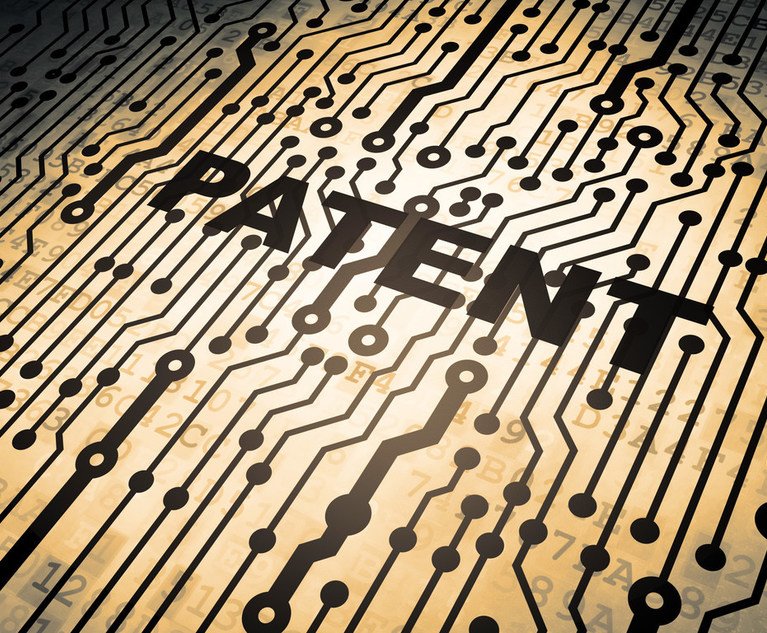A Diverse Patent Portfolio Better Protects Artificial Intelligence Inventions
Takeaways from 'IBM v. Zillow' from a Patent Drafting Perspective Part Two of a Two-Part Article Part One of this article discussed the IBM v. Zillow case, where IBM sued Zillow for infringing on seven IBM's patents directed to artificial intelligence (AI) algorithms for estimating property value. This segment analyzes the claims made in the case and presents some tips for drafting AI-related claims from the perspective of patent infringement.
September 28, 2023 at 03:33 PM
9 minute read

In Part One of this article, in last month's issue, we discussed the IBM v. Zillow case, where IBM sued Zillow for infringing on seven IBM's patents directed to artificial intelligence (AI) algorithms for estimating property value. The focus was on the difficulties in establishing patent infringement on specific AI algorithms, as well as the strategic advantages of including additional patent claims that target ancillary features of an AI system. In this segment, we will analyze the claims made in the IBM v. Zillow case and present some tips for drafting AI-related claims from the perspective of patent infringement.
Claim Drafting Techniques Must Consider Deep Learning Technologies and How They Are Infringed
From a claim drafting perspective, some improvements can be made to the '183 patent. Specifically, the "comparing" step in claim 1 appears to consolidate a training step and an inference step into one, which may introduce several risks from an infringement perspective.
This content has been archived. It is available through our partners, LexisNexis® and Bloomberg Law.
To view this content, please continue to their sites.
Not a Lexis Subscriber?
Subscribe Now
Not a Bloomberg Law Subscriber?
Subscribe Now
NOT FOR REPRINT
© 2025 ALM Global, LLC, All Rights Reserved. Request academic re-use from www.copyright.com. All other uses, submit a request to [email protected]. For more information visit Asset & Logo Licensing.
You Might Like
View All
Boston IP Firm Avoids Time-Barred Legal-Malpractice Suit From Tech Company
5 minute read
Brooks Sports Asks Federal Court to Weigh in on Patent Dispute With PUMA

Ouraring Claims Competitor RingConn Infringed on Wearable Tech Patents
3 minute read
Federal Circuit Decision Clarifies Obviousness-Type Double Patenting and Patent Term Adjustments In 'Allergan v. MSN Laboratories'
7 minute readLaw Firms Mentioned
Trending Stories
Who Got The Work
J. Brugh Lower of Gibbons has entered an appearance for industrial equipment supplier Devco Corporation in a pending trademark infringement lawsuit. The suit, accusing the defendant of selling knock-off Graco products, was filed Dec. 18 in New Jersey District Court by Rivkin Radler on behalf of Graco Inc. and Graco Minnesota. The case, assigned to U.S. District Judge Zahid N. Quraishi, is 3:24-cv-11294, Graco Inc. et al v. Devco Corporation.
Who Got The Work
Rebecca Maller-Stein and Kent A. Yalowitz of Arnold & Porter Kaye Scholer have entered their appearances for Hanaco Venture Capital and its executives, Lior Prosor and David Frankel, in a pending securities lawsuit. The action, filed on Dec. 24 in New York Southern District Court by Zell, Aron & Co. on behalf of Goldeneye Advisors, accuses the defendants of negligently and fraudulently managing the plaintiff's $1 million investment. The case, assigned to U.S. District Judge Vernon S. Broderick, is 1:24-cv-09918, Goldeneye Advisors, LLC v. Hanaco Venture Capital, Ltd. et al.
Who Got The Work
Attorneys from A&O Shearman has stepped in as defense counsel for Toronto-Dominion Bank and other defendants in a pending securities class action. The suit, filed Dec. 11 in New York Southern District Court by Bleichmar Fonti & Auld, accuses the defendants of concealing the bank's 'pervasive' deficiencies in regards to its compliance with the Bank Secrecy Act and the quality of its anti-money laundering controls. The case, assigned to U.S. District Judge Arun Subramanian, is 1:24-cv-09445, Gonzalez v. The Toronto-Dominion Bank et al.
Who Got The Work
Crown Castle International, a Pennsylvania company providing shared communications infrastructure, has turned to Luke D. Wolf of Gordon Rees Scully Mansukhani to fend off a pending breach-of-contract lawsuit. The court action, filed Nov. 25 in Michigan Eastern District Court by Hooper Hathaway PC on behalf of The Town Residences LLC, accuses Crown Castle of failing to transfer approximately $30,000 in utility payments from T-Mobile in breach of a roof-top lease and assignment agreement. The case, assigned to U.S. District Judge Susan K. Declercq, is 2:24-cv-13131, The Town Residences LLC v. T-Mobile US, Inc. et al.
Who Got The Work
Wilfred P. Coronato and Daniel M. Schwartz of McCarter & English have stepped in as defense counsel to Electrolux Home Products Inc. in a pending product liability lawsuit. The court action, filed Nov. 26 in New York Eastern District Court by Poulos Lopiccolo PC and Nagel Rice LLP on behalf of David Stern, alleges that the defendant's refrigerators’ drawers and shelving repeatedly break and fall apart within months after purchase. The case, assigned to U.S. District Judge Joan M. Azrack, is 2:24-cv-08204, Stern v. Electrolux Home Products, Inc.
Featured Firms
Law Offices of Gary Martin Hays & Associates, P.C.
(470) 294-1674
Law Offices of Mark E. Salomone
(857) 444-6468
Smith & Hassler
(713) 739-1250








